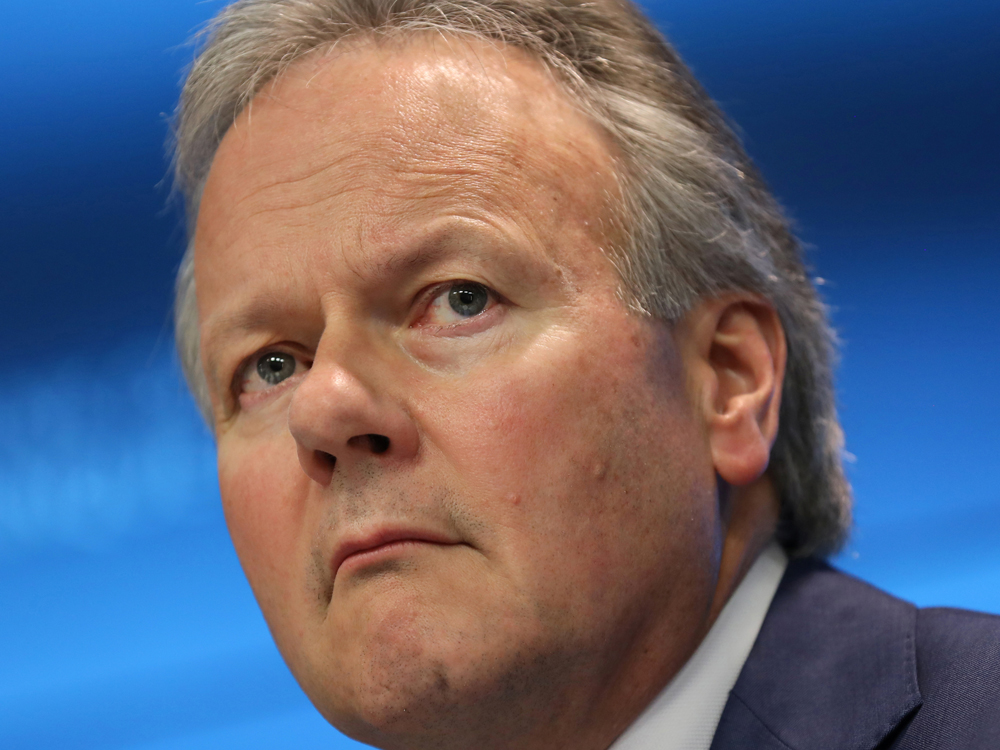The Bank of Canada means it when it says it’s data-dependent.
It could have justified an interest-rate cut this week. Almost every other major central bank took out insurance against the trade wars this summer, and bond prices show that those with skin in the game have concluded that trouble is coming. A sharp drop in Canadian business investment in the second quarter was very bad news.
But Bank of Canada Governor Stephen Poloz and his deputies opted to leave the benchmark interest rate unchanged at 1.75 per cent on Sept. 4. They didn’t even offer a signal that they will lower interest rates at their next policy meeting in eight weeks, saying only that they “will pay particular attention to global developments and their impact on the outlook for Canadian growth and inflation” as they prepare their fourth-quarter economic report, which will be published Oct. 30.
The decision implies that policymakers think there is enough stimulus in the system to counter the effects of the trade wars for at least a little while longer. That cushion offsets the need for insurance, suggesting the Bank of Canada will require more evidence before it’s persuaded that interest-rate cuts are necessary to ride out U.S. President Donald Trump’s assault on China’s commercial practices.
“Canada’s economy is operating close to potential,” the Bank of Canada said in its new policy statement. “However, escalating trade conflicts and related uncertainty are taking a toll on the global and Canadian economies. In this context, the current degree of monetary stimulus remains appropriate.”
The central bank estimates that Canada’s potential, or non-inflationary, rate of economic growth is about 1.8 per cent. The economy accelerated to an annualized pace of almost four per cent in the second quarter, making up ground lost over the winter when the economy nearly stalled. Policy makers said some of the second-quarter strength was “temporary,” but not all of it.
Hiring is solid, wages are advancing at a fast pace, and the housing market has pushed through a rough patch. The benchmark lending rate is lower than inflation, an indicator the economy is unconstrained by the cost of money, and the Canadian dollar is about three per cent lower than it was a year ago and about nine per cent lower than two years ago. Rate cuts by the Federal Reserve have pushed bond yields lower not only in the U.S., but around the world, including Canada.
That existing stimulus separates Canada from some of the countries where central banks have been cutting interest rates. Lower borrowing costs would spur new lending at a time when household and corporate debt already is at elevated levels. Most of Canada’s trade is with the United States, where domestic spending is strong, providing an additional buffer against the global slowdown.
“A gloomier global outlook appears necessary to bring the BoC officials’ consensus in favour of policy rate cuts,” said Sébastien Lavoie, chief economist at Laurentian Bank.
 Most analysts and traders assumed the Bank of Canada would leave interest rates unchanged in September, while setting itself up to cut at meetings in October or December. The thinking is that the negative effects of the trade wars will eventually consume Canada they way they have countries such as Australia, Germany, and South Korea.
Most analysts and traders assumed the Bank of Canada would leave interest rates unchanged in September, while setting itself up to cut at meetings in October or December. The thinking is that the negative effects of the trade wars will eventually consume Canada they way they have countries such as Australia, Germany, and South Korea.
“They are going to have to do something,” said Darcy Briggs, a portfolio manager at Franklin Bissett Investment Management, citing the slope of bond yields, which currently shows that it is cheaper to borrow over the longer term than for a number of months. That traditionally signals a downturn, as traders are more worried about defaults in the near term than years down the road. “We took it as they are going to save the thunder for the October meeting,” Briggs said. “The collective wisdom of the markets tends to be right more often than not.”
Still, that general assumption was tested by the Bank of Canada’s statement, as policy makers avoided hints of where they might be headed. Canada’s dollar rose after the Bank of Canada published its statement, and the prices of assets tied to short-term interest rates indicated that traders’ confidence in an October interest-rate cut faded somewhat.
There were a few more negative modifiers in the statement than positive ones, but a qualitative analysis could produce the conclusion that Canadian policy makers would rather avoid cutting interest rates if at all possible. They indicated that they are constrained in taking out insurance against a global downturn by elevated levels of private debt, noting that resurgent demand for home loans, “could add to already-high household debt levels, although mortgage underwriting rules should help to contain the buildup of vulnerabilities.”
Lavoie, a former Bank of Canada economist, called the language about household debt the most important addition to the new statement. It implies a higher bar to additional stimulus than might exist in places where debt is less of a threat to future economic growth.
“We do not feel they are willing to commit to October with so much information to come,” said Mark Chandler, head of Canadian rates strategy at RBC Capital Markets, citing the Oct. 21 election and a bevy of data, including the central bank’s quarterly survey of business intentions, a key indicator.
Chandler’s current forecast is for an interest-rate cut in January, but he acknowledges that the trade wars could force Poloz and his deputies to move sooner. “The central bank is keeping an open mind on it,” he said in a note on Sept. 4.
•Email: kcarmichael@postmedia.com | CarmichaelKevin

